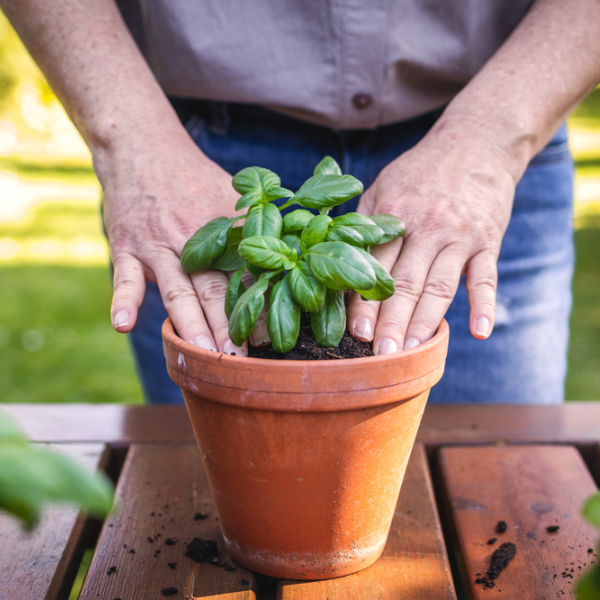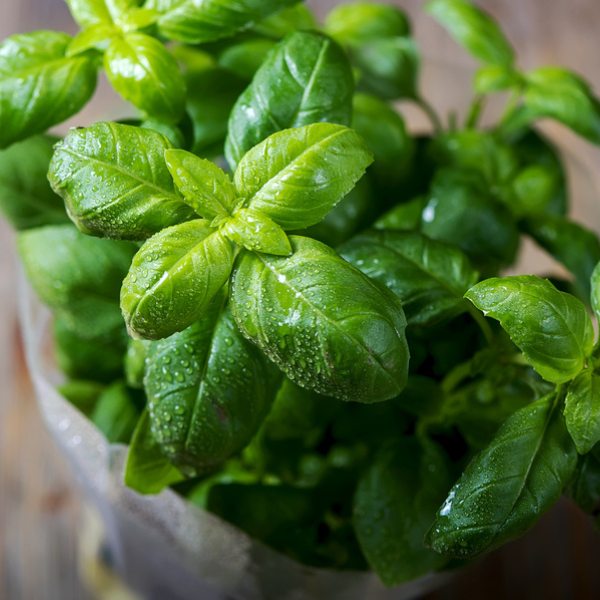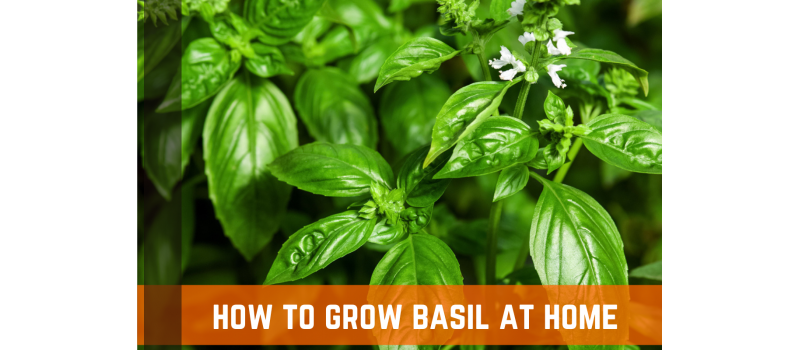Basil's history dates back 5,000 years, resulting in 150 different cultivars with unique flavors. Sweet basil is common in Italian cuisine while Thai basil, lemon basil, and holy basil are popular in Asian cuisine. Most believe basil originated in India or Asia and came to the Mediterranean via historic spice routes. This herb is easy to grow making it a staple for any home gardener.
Basil Optimal Growing Conditions
Basil requires six to eight hours of sunlight daily; throughout the South and Southwest, afternoon shade is beneficial. Generally, pace at a distance of twelve to eighteen inches apart, as directed on the label. Keep plants sheltered in the event of a late cold snap because they are extremely vulnerable to frost. Basil prefers soil containing a pH of six to seven that is rich, moist, yet well-drained.
Test your soil or simply make it better by adding lots of organic nutrients like cottonseed, blood, or compost. Even though rich, nutrient-rich soil is a terrific place to start when growing basil, you'll receive even superior success if you also routinely feed your plants.
This is especially true considering how heavily basil is plucked for its abundant leaves. Basil is simple to cultivate, but it can only be done outside in the summer, and then only when the earth has warmed up sufficiently. Don't hurry the basil. The plant won't thrive without heat!

How To Grow Basil
Since basil grows best in warm climates, it is frequently planted from transplants obtained from nurseries after being started in a greenhouse. You must sow basil seeds inside approximately six weeks before the final spring frost if you plan to grow it from seeds. After sixty to ninety days from seeding, basil is ready for harvest.
Harvesting or clipping off the top groups of leaves as soon as the plant reaches around 6 inches in height can help you keep your basil from flowering for as long as possible. If the plant produces flowers, it will soon go to seed and stop growing bushy and producing a lot of excellent leaves.
Your plant's size will vary according on the type, the growth environment, and the quantity of harvest. Although sweet basil can grow as tall as 6 feet, it usually only reaches heights of 18 to 24 inches, or even less if you remove the plant frequently and avoid letting it flower. Using and pinching your basil regularly will encourage it to grow bushier and more leafy.
There are also 6-inch-tall dwarf variants that grow well in pots. Basil is a herb that you can pick as you go. If you have an oversupply on hand, you can clip a mass harvest, or you can only harvest what you need. Basil should be harvested similarly to mint by cutting a stem just above the point where two large leaves converge.

Care & Maintenance
Six to eight hours of bright sunlight each day are ideal for basil growth. Additionally, more sun means stronger plants and fewer disease issues. This is usually case until it's extremely hot outside, in which case basil loves partial shade. Basil grows best in deep, moist soil that drains well.
Compost or even other nutrient-rich mulch is a wonderful option to add to your soil to improve its quality. Regularly water basil deeply, but make sure the soil is well-drained. Mulch can aid in retaining moisture. Basil enjoys the heat. Planting shouldn't be attempted until nighttime lows are above Fifty degrees Fahrenheit and daytime highs are in the 70s.
One of the earliest plants to perish in the fall is basil since it is extremely susceptible to frost damage. When frost is imminent, you can extend the growing season a little by protecting your crops with row covers. Keep the row cover away from the foliage; touching them could damage the delicate leaves and cause them to turn black. You could choose to let some basil plants flower and self-seed within your yard if you live in a region without frost.
Not all types will be effective in doing this. You might need to fertilize your basil plants frequently because you'll be picking their leaves. It works well and ensures that fresh leaves will continue to grow when you use an all-purpose fertilizer.

Harvesting & Storing Basil
Basil plants can be harvested when they are 6 to 8 inches tall. Even if you don't dry, cook, or freeze the leaves, selecting them periodically will increase the plant's vitality. After harvest, basil leaves can be refrigerated or preserved for later use. While convenient, dried basil lacks some flavor. Although the texture is compromised, the flavor of frozen basil is stronger than that of dry.
In cooked recipes, use frozen basil. Blend fresh basil and your preferred olive oil and portion it onto an ice tray for freezing if you enjoy cooking with basil and olive oil. The frozen cubes should be kept in an airtight container. To promote growth all summer long, be sure to routinely pick the leaves.
Pick the leaves even if you don't need to in order to keep the plant alive. Put them away for future use! Twelve basil plants can yield 4 to 6 cups of leaves every week if you pick them frequently.
Pests & Diseases
Aphids are indoor basil's worst problem. Beetles and snails can damage plants outside. 2 teaspoons of dishwashing liquid per gallon of water will kill these bugs. Basil is sensitive to powdery mildew, which can be prevented by increasing air circulation and avoiding overhead watering, which can splatter fungal spores onto the plants. Discard severely damaged leaves.

